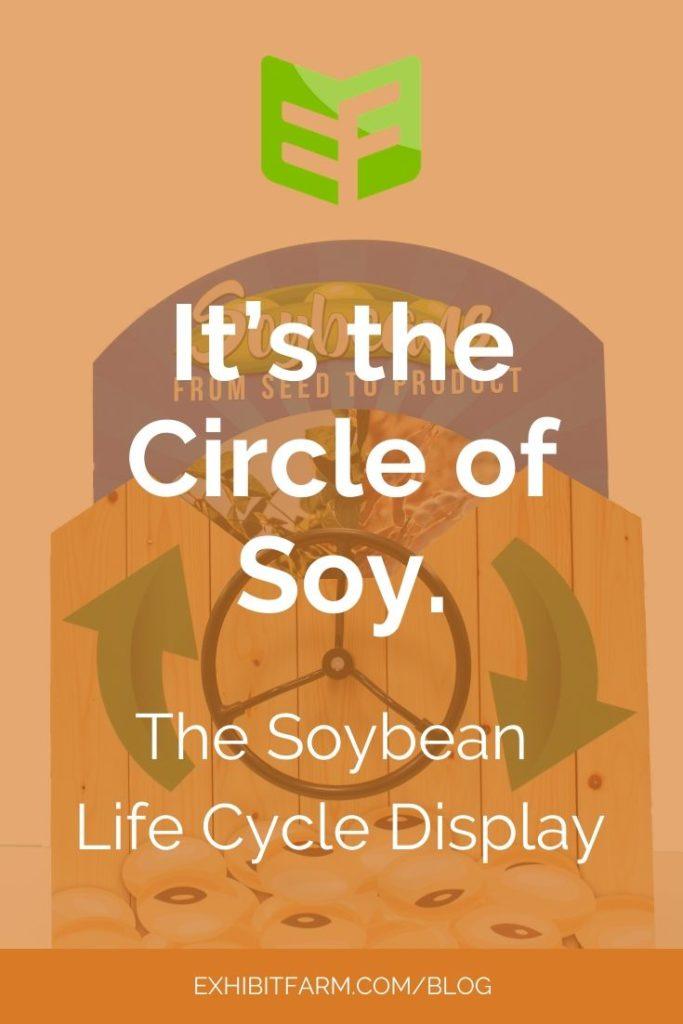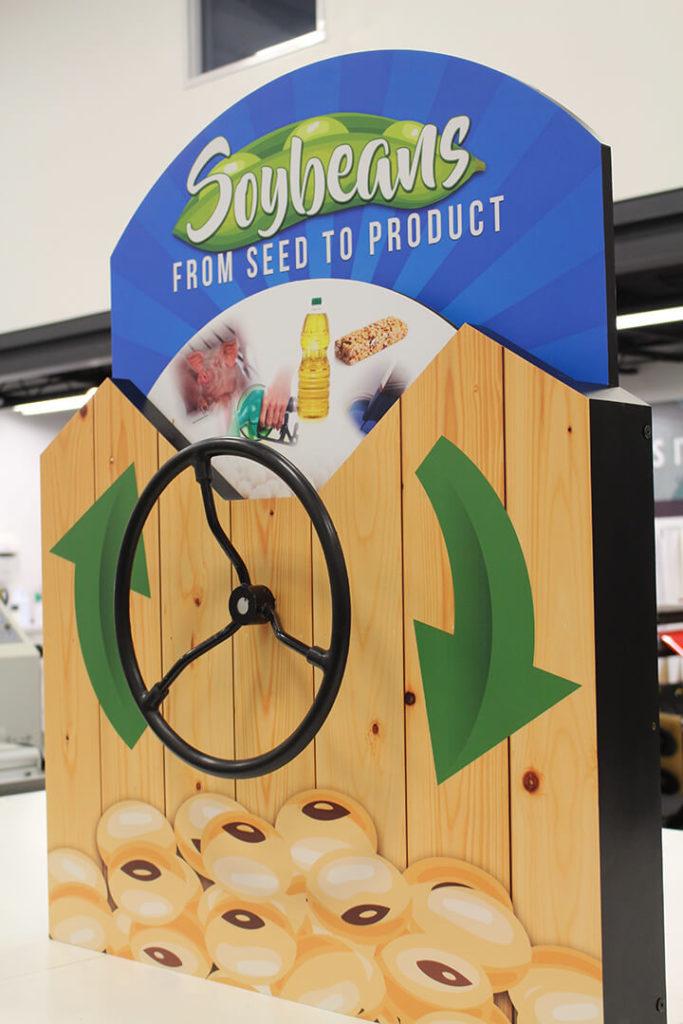
You’ve heard of the Circle of Life, yes? (Don’t make us start singing.) Well, we borrowed the basic idea and applied it to an ag display. More than one ag display, in fact, but today we’ll just be talking about one: the Soybean Life Cycle display.
(You can find the specs of this agricultural display in our catalog.)
What can you do with soybeans?
It can be hard for people in the ag industry to show consumers the connection between raw ag products and the goods people use everyday. After all, a field full of fuzzy green soybean plants doesn’t look like the dry brown twigs and little pods that get harvested. And those twigs and beans don’t look anything like the foods, fuels, and other products they eventually become.
People can eat soy, of course — it’s where tofu and edamame come from. And soy-derived products, like soybean oil and soy lecithin, are used in dozens of foods that don’t have an obvious soy connection. Ever made brownies or muffins using that yellow oil labeled “vegetable oil”? There’s a good chance it was actually soybean oil. Most soybeans don’t go directly to grocery stores, though. They get turned into animal feed, indirectly supplying people with tasty, protein-dense pork, beef, poultry, and even fish.
And then there are the industrial uses. Scientists discovered a way to make biodiesel, an alternative fuel similar to ethanol, from soybeans. Moreover, soybean oil can be used to replace petroleum in some manufactured products. There’s some truly unexpected products soybeans wind up in — from carpet to car tires.

Observing the Life Cycle
But how to get that information out to consumers? When we designed the soybean life cycle display, we decided to start with some pictures. After all, visuals can be very effective at helping people learn and remember new facts. First, there’s a photo of young soybeans in a field. Then, there’s a photo of the harvest stage. And lastly, there’s a collage of photos of the products soybeans contribute to, from granola bars to biodiesel.
All those photos document the soybeans’ existence from their early growth to their harvest to their final uses. And since the photos are all mounted on a wheel, this display shows the life cycle in a literal and a figurative sense. With the repurposed tractor steering wheel attached to the front of the display, folks can spin the wheel to cycle through each stage. It’s a way to view the process in its natural sequence.
The unit holding the wheel, meanwhile, shows graphics of a fresh soybean pod and of some dried beans. That way, it catches attention and provides one more way to familiarize consumers with soybeans. The unit also attaches firmly to a wall, so the display can be positioned at the perfect height for the intended audience. And, as a bonus, we honeycombed the material to take away some weight but keep it sturdy. It’s a total package. Which seems appropriate, given that it’s about the total package of what a soybean is and can become.